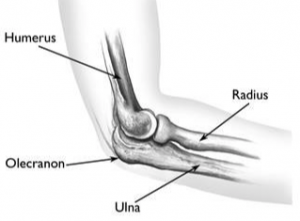On Monday, April 29, Los Angeles Dodgers center fielder A.J. Pollock was placed on the 10-day injured list for an infected right elbow.

The infection occurred at the site of two previous surgeries for what sounds like a symptomatic open olecranon growth plate. Growth plate issues can occur in people that throw a lot.
Pollock has been taking antibiotics, and on May 2 he underwent surgery to remove a metal screw that was inserted into the growth plate of his right elbow in his 2016 procedure. Removal of the screw is necessary to cure the infection as the screw is a foreign material in which bacteria can stay protected from the immune system and reactivate at any time. Pollock was released from the hospital on May 3rd without a timetable for his return to play, but Dodgers manager Dave Roberts expects him to be back this season.
